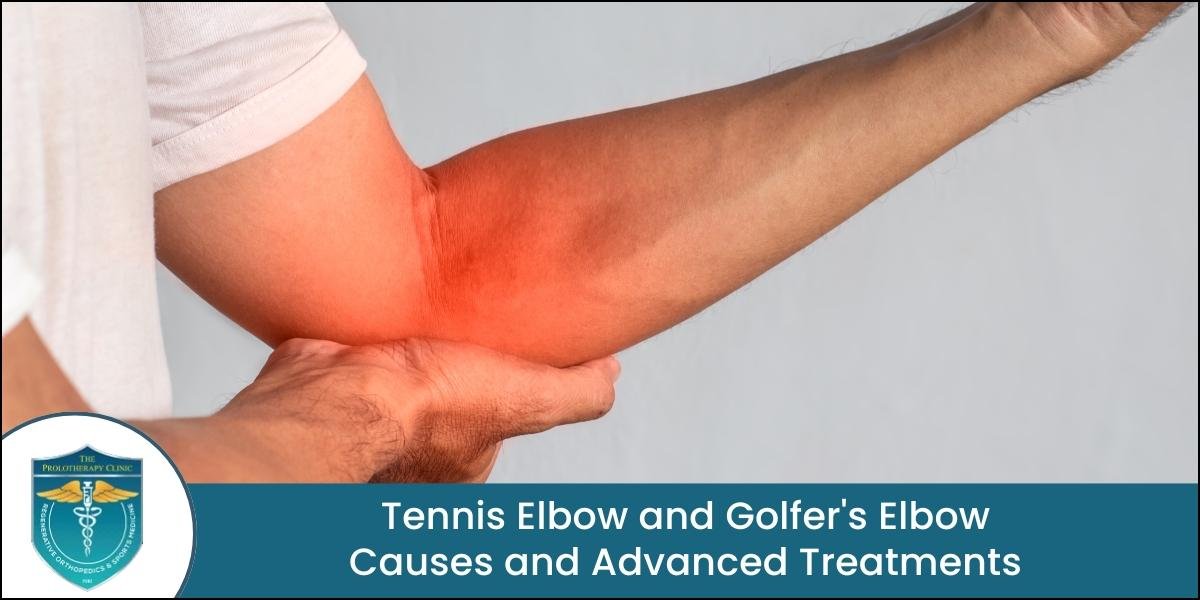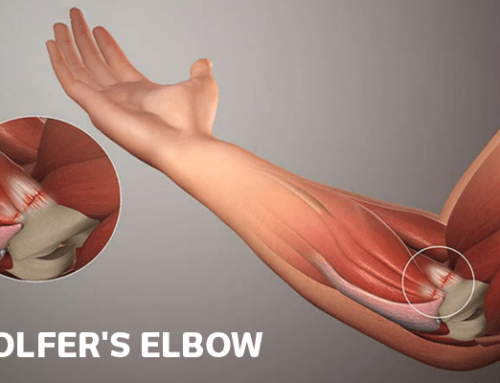Elbow pain can be a frustrating and debilitating condition, often interfering with daily tasks, work, and sports. Two of the most common culprits are Tennis Elbow and Golfer’s Elbow. While their names suggest they are sports-specific, anyone can develop these conditions. Understanding the difference is the first step toward effective treatment.
What’s the Difference?
Despite both causing elbow pain, these conditions affect different sides of the joint.
-
Tennis Elbow (Lateral Epicondylitis): This is an overuse injury of the tendons on the outside (lateral) of the elbow. It involves the tendons that extend your wrist and fingers.
-
Golfer’s Elbow (Medial Epicondylitis): This affects the tendons on the inside (medial) of the elbow. These tendons are responsible for flexing your wrist and fingers.
Common Causes: It’s Not Just Sports
Repetitive stress is the primary cause for both conditions. Tiny tears develop in the tendons where they attach to the elbow bone, leading to pain and inflammation.
Tennis Elbow Causes: Repetitive typing, painting, gardening, using plumbing tools, or any activity that repeatedly extends the wrist.
Golfer’s Elbow Causes: Activities like swinging a golf club with poor form, throwing sports, weight training, shoveling, or repetitive computer mouse use.
Beyond Rest and Ice: Advanced Treatment Options
While rest, ice, and anti-inflammatories can manage initial symptoms, they often don’t address the underlying tendon weakness. For persistent pain, advanced treatments focus on stimulating the body’s natural healing response.
-
Physiotherapy: A tailored program to strengthen forearm muscles, improve flexibility, and correct biomechanics.
-
Shockwave Therapy: Uses sound waves to stimulate blood flow and promote healing in the damaged tendon tissue.
-
PRP (Platelet-Rich Plasma) Therapy: Involves injecting a concentration of the patient’s own platelets into the injured area to accelerate tissue repair.
-
Prolotherapy: A regenerative injection technique that uses a dextrose solution to irritate the damaged tendon ligament junction. This triggers a localized inflammatory response, drawing healing nutrients to the area and promoting the growth of new, stronger connective tissue.
Finding Lasting Relief in Pune
If you are in Pune, or the surrounding areas, and struggling with persistent elbow pain, seeking specialized care is crucial. We at The Prolotherapy Clinic – provides Tennis Elbow treatment in Hadapsar, Pune offers a targeted approach to heal the root cause of your pain.
Our expertise in advanced regenerative treatments like Prolotherapy provides a powerful, non-surgical solution to strengthen weakened tendons and achieve long-term recovery. Don’t let elbow pain control your life—explore advanced treatment options for Golfer’s Elbow treatment in Pune and get back to the activities you love.
The Prolotherapy Clinic Other Branches in Pune
Baner – 2nd Floor, Eibenstock House, 201 A, Baner Rd, Balewadi Phata, Baner, Pune
Pimple Saudagar – 510, 5th Floor, Rainbow Plaza, Shivar Garden Chowk, Rahatani Rd, Sunshine Villas, Dwarkadheesh Gardens, Pimple Saudagar
Frequently Asked Questions (FAQs)
1. What is the main difference between tennis and golfer’s elbow?
Tennis elbow causes pain on the outside of the elbow, while golfer’s elbow causes pain on the inside.
2. How long does it take for tennis elbow to heal?
With conservative treatment, it can take 6 months to 2 years. Advanced treatments like Prolotherapy can significantly reduce this healing time.
3. What is the fastest way to cure golfer’s elbow?
While no instant cure exists, a combination of rest, targeted physiotherapy, and advanced regenerative injections like PRP or Prolotherapy offers the most effective and fastest path to recovery.
4. Can I still workout with tennis elbow?
Yes, but you must avoid exercises that aggravate the pain. Focus on lower body and core work, and consult a physiotherapist for safe, strengthening exercises for the forearm.
5. Is surgery necessary for elbow tendonitis?
Surgery is typically a last resort after 6-12 months of failed non-surgical treatment. Most patients find complete relief through advanced non-surgical options.




